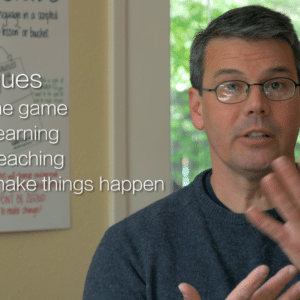You’re fluency hunting with fellow players. In order to rapidly communicate team strategies in the form of techniques, you are all signing. You’re hunting a target language from your fluent fool, so you boost obviously! by using signing as a bridge language to carrying and remembering the spoken language.
Gesture is likely the oldest and most accessible form of human language.
Though sign languages can be just as complex as spoken languages, they seem to come naturally and can be learned especially rapidly.
The advantages of sign language are numerous. Using sign with babies accelerates their acquisition of spoken language. As silent communication, sign languages can be used in noisy environments, in situations where making noise is undesired, or simultaneously with spoken languages (to make your meaning more obvious). They can be used through sound-proof windows, from a distance, underwater, in a vacuum, and by being fluent in them we bring deaf elders, adults, and youth back into our daily communicative lives.
With all these advantages, it’s pretty hard to excuse a lack of fluency in a signed language.
Almost every culture (and hence, every language) has a signed language (and most have a wide array of dialects) – for the purposes of language acquisition, it’s ideal to learn your target culture’s sign language, and use that as a bridge language, rather than to impose ASL on it. Each sign language carries some of that culture’s mind; culture and language are inseparable.
However, we are rarely able to do this, due to some common constraints, such as the time it takes to find an appropriate fluent fool. We then use our native sign language as a default bridge language, always ready to switch out all (or parts) in favor of the target culture’s gestures and sign.
In addition to language issues, we’ve observed that teams of all kinds can vastly accelerate their communication by pairing hand-signs with working agreements, elevating their level of accord and teamwork. There is something about gesturing together that seems to bring us closer, raising levels of trust.
We believe that at one time, every community had its own signed language, to speak with deaf elders (and the occasional deaf youth or adult), for silent communication while hunting, and during the many instances when voice communication didn’t suffice, wasn’t available, or simply wasn’t elegant enough.
By making sign language a cultural commonality again we may be reclaiming a lost universal heritage.
Sign language is awesome.
Introducing the technique in language acquisition
Though we use it from the first moment, we only introducing the techinque Signing late in language play, usually to keep advanced players signing.
Short: “Technique: Signing. Keep on signing for as long as you can; even though you no longer need it, as your spoken fluency has risen a lot, any new speakers in the “lunatic fringe” will be better able to keep up with your conversation, and thus more quickly advance in proficiency, if you sign when they’re present.”
Applying the technique to language acquisition
Sign has many uses – first and foremost, it is a boost to tq TPR and tq Obviously!
- Give each newly innovated technique a hand sign (from a fluent signer if possible, if not, improvise one on your own).
- During fluent advanced conversations, use hand signs to boost obviously! for a less advanced Lunatic Fringe.
- Hand signs allow advanced players to communicate techniques while staying immersed in the target language.
But what about…?
At first, players may have “heavy hands”, they may be reluctant to copycat, consciously or unconsciously. Copycatting is a skill!
Advanced speakers new to WAYK will find signing slows their fluency. Fluent signers, surprisingly, may struggle, since they’ve either mapped their sign to their mother tongue (such as ASL to English), or have a difficult time learning a new dialect of sign, used in the WAYK game.
- For reluctant or unsure copy-catters, you go first modeling the Rules of the Game, and Pull them through it.
- For advanced speakers and fluent signers, remind them they’re learning a language too, the game language, not just acting as teachers of their own – We’ll All Get There Together, in bite-sized pieces. And How Fascinating it is!






“Signing is awesome” – can’t disagree with that. I mentioned in the video I uploaded a while ago that Mai and I had to stop our game to rush to the airport. Once Mai was on the plane and waiting for takeoff, we were able to carry on a little conversation through the window about how I didn’t have a hat – whereas most people could only wave their loved ones good bye.
Funsome!